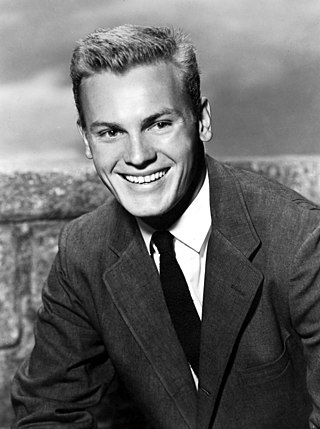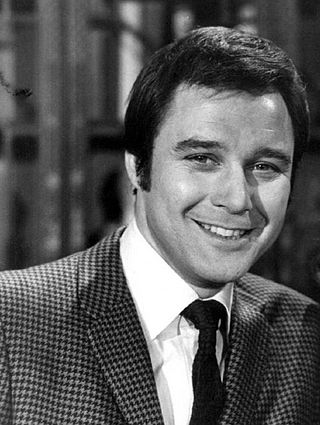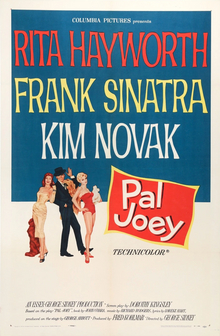Plot
In 1916, as U.S. soldiers chase after Pancho Villa, Army Major Thomas Thorn (Gary Cooper) is assigned to be a battlefield observer and reward heroism. He has been suggested for this duty by a Colonel Rogers (Robert Keith), who is 63 years old and impatiently yearning to be promoted to general before mandatory retirement a few months hence.
Rogers leads his regiment in an old-fashioned but poorly planned Cavalry charge on Ojos Azules, a villa owned by Adelaide Geary (Rita Hayworth) where Villa's men withdrew after a victory over Mexican government troops, enjoying her hospitality. Thorn, excused from the fighting, observes through his binoculars various acts of heroism by Lt. Fowler (Tab Hunter), Sgt. Chawk (Van Heflin), Cpl. Trubee (Richard Conte) and Pvt. Renziehausen (Dick York) in defeating Villa's men.
Rogers is proud of having personally led the charge, but furious when Thorn won't nominate him for a citation. Thorn insists that leading his regiment in the charge was "in the line of duty" and refuses to consider a citation for the Medal of Honor, awarded for heroism "above and beyond the call of duty." Rogers reminds Thorn that he protected him from an investigation for cowardice, which he did out of respect for Thorn's father, but does not sway Thorn.
Thorn intends to recommend the four soldiers for the Medal of Honor. He is ordered to take along Mrs. Geary, who is charged with "giving aid and comfort to the enemy." A fifth soldier, a private (Michael Callan) also nominated by Thorn for a medal after an earlier battle, rides with them to the expedition's base at the Texas town of Cordura.
This seemingly simple task becomes increasingly complex as the incessant squabbling between Thorn and the men threatens to destroy them all. Eager to learn more about their acts of bravery, Thorn finds the men to be hostile toward him. A series of harrowing incidents make it clear that the apparent heroes were motivated by ambition, terror, or chance, while it is the disgraced Thorn who possesses moral courage. The men soon become insubordinate, ultimately turning against Thorn and forcing him to fight the soldiers to save his own life. The movie ends with the men learning personal, not physical, courage from Thorn's example.
Production
The film was William Goetz's second film in a six-picture deal for Columbia after Me and the Colonel . [1]
With a budget of $4.5 million it was one of Columbia's most expensive films at the time. [1]
Parts of the film were shot at Snow Canyon and Harrisburg in Utah as well as Indio, California. [3]
In a March 1959 Variety article, it was announced that the movie would be a "roadshow" release, with a 3-hour runtime and special overture and entre-act music from composer Elie Siegmeister. [4]
Screenplay
Author Glendon Swarthout got the idea for his novel after he had obtained eyewitness accounts for Medal of Honor citations while serving with the 3rd Infantry Division in Southern France during World War II. [5] This personal experience was applied to his novel.
Filming
Dick York suffered a severe back injury during the filming that caused him great pain in his later years, so much so that he was forced to resign from his longtime role of Darrin Stephens on the 1960s television program Bewitched , the injury indeed almost ruining his life. In York's own words, "Gary Cooper and I were propelling a handcar carrying several 'wounded' men down [the] railroad track. I was on the bottom stroke of this sort of teeter-totter mechanism that made the handcar run. I was just lifting the handle up as the director yelled 'cut!' and one of the 'wounded' cast members reached up and grabbed the handle. I was suddenly, jarringly, lifting his entire weight off the flatbed—one hundred and eighty pounds [82 kilograms] or so. The muscles along the right side of my back tore. They just snapped and let loose. And that was the start of it all: the pain, the painkillers, the addiction, the lost career." [6]
The year 1959 in film involved some significant events, with Ben-Hur winning a record 11 Academy Awards.
The year 1952 in film involved some significant events.
The following is an overview of 1936 in film, including significant events, a list of films released and notable births and deaths.

Rita Hayworth was an American actress. She achieved fame in the 1940s as one of the top stars of the Golden Age of Hollywood, and appeared in 61 films in total over 37 years. The press coined the term "The Love Goddess" to describe Hayworth after she had become the most glamorous screen idol of the 1940s. She was the top pin-up girl for GIs during World War II.

Richard Allen York was an American actor. He was the first actor to play Darrin Stephens on the ABC fantasy sitcom Bewitched. He played teacher Bertram Cates in the film Inherit the Wind (1960).

Bewitched is an American fantasy sitcom television series that originally aired for eight seasons on ABC from September 17, 1964, to March 25, 1972. It is about a witch who marries an ordinary mortal man and vows to lead the life of a typical suburban housewife. The show was popular, finishing as the second-rated show in America during its debut season, staying in the top ten for its first three seasons, and ranking in eleventh place for both seasons four and five. The show continues to be seen throughout the world in syndication and on recorded media.

Tab Hunter was an American actor, singer, film producer, and author. Known for his blond hair and clean-cut good looks, Hunter starred in more than forty films. During the 1950s and 1960s, in his twenties and thirties, Hunter was a Hollywood-heartthrob, acting in numerous roles and appearing on the covers of hundreds of magazines. His notable screen credits include Battle Cry (1955), The Girl He Left Behind (1956), Gunman's Walk (1958), and Damn Yankees (1958). Hunter also had a music career in the late 1950s; in 1957, he released a no. 1 hit single "Young Love". Hunter's 2005 autobiography, Tab Hunter Confidential: The Making of a Movie Star, was a New York Times bestseller.

Jerome Irving Wald was an American screenwriter and a producer of films and radio programs.

Emmett Evan "Van" Heflin Jr. was an American theatre, radio, and film actor. He played mostly character parts over the course of his film career, but during the 1940s had a string of roles as a leading man. Heflin won the Academy Award for Best Supporting Actor for his performance in Johnny Eager (1942). He also had memorable roles in Westerns such as Shane (1953), 3:10 to Yuma (1957), and Gunman's Walk (1958).

The Shootist is a 1976 American Western film directed by Don Siegel and based on Glendon Swarthout's 1975 novel of the same name, and written by Miles Hood Swarthout and Scott Hale. The film stars John Wayne in his last film appearance before his death in 1979, Lauren Bacall, Ron Howard, James Stewart, Richard Boone, John Carradine, Scatman Crothers, Richard Lenz, Harry Morgan, Sheree North and Hugh O'Brian.

Glendon Fred Swarthout was an American writer and novelist.

Michael Callan, sometimes known as Mickey Collins, was an American actor best known for originating the role of Riff in West Side Story on Broadway, and for his film roles for Columbia Pictures, notably Gidget Goes Hawaiian, The Interns and Cat Ballou.
Elie Siegmeister was an American composer, educator and author.

Jean Louis was a French-American costume designer. He won an Academy Award for The Solid Gold Cadillac (1956).

Pal Joey is a 1957 American musical comedy film directed by George Sidney, loosely adapted from the Rodgers and Hart musical play of the same name, and starring Rita Hayworth, Frank Sinatra, and Kim Novak.

Separate Tables is a 1958 American drama film starring Rita Hayworth, Deborah Kerr, David Niven, Burt Lancaster, and Wendy Hiller, based on two one-act plays by Terence Rattigan that were collectively known by this name. Niven and Hiller won Academy Awards for Best Actor and Best Supporting Actress respectively for their performances. The picture was directed by Delbert Mann and adapted for the screen by Rattigan, John Gay and an uncredited John Michael Hayes. Mary Grant and Edith Head designed the film's costumes.

Vinton Hayworth, also known as Jack Arnold and Vincent Haworth, was an American actor, playwright and screenwriter who began in weaselly and milquetoast roles and aged into dignified character parts. He appeared in over 90 films during his career, as well as on numerous television shows. Later audiences will recognize him from his final role as General Winfield Schaeffer in the fourth and fifth seasons of the sitcom I Dream of Jeannie. He was the uncle of Rita Hayworth, as well as being the uncle of Ginger Rogers.
Anderson Lawler was an American actor and producer in film and theatre who had a career lasting from the 1920s through the 1950s. He began on Broadway before moving to featured and supporting roles in Hollywood over a ten-year career at the very beginning of the sound film era. After the end of his acting career, Lawler moved to the production end of the film industry as well as becoming a producer of legitimate theater in the late 1940s and 1950s.

Ted Mapes was an American character actor, who was also a prolific stuntman and body double. Born on November 25, 1901, in St. Edward, Nebraska, he moved to Los Angeles in his mid-20s, and entered the film industry in 1929, first as a grip, and then as a stuntman and actor. He doubled for many famous actors, including Jimmy Stewart and Gary Cooper. His film and television career spanned forty years, during which time he appeared in hundreds of films and television shows, either as an actor, stuntman or body double. After his career in front of the camera ended in 1969, Mapes became an advocate for animal safety in films, working as an observer on sets for the American Humane Association.
Henry C. Rogers was an American publicist in the entertainment industry. He worked with notable actors and singers, such as Rita Hayworth, Joan Crawford, Frank Sinatra, Shirley MacLaine, Dean Martin, Audrey Hepburn, Paul Newman, Steve McQueen, Paul McCartney, and many others. Rogers wrote four books, titled Walking the Tightrope: the private confessions of a public relations man, Rogers' Rules for Success, The One-Hat Solution: Rogers' Strategy for Creative Middle Management, and Rogers' Rules for Businesswomen: How to Start a Career and Move Up the Ladder.














